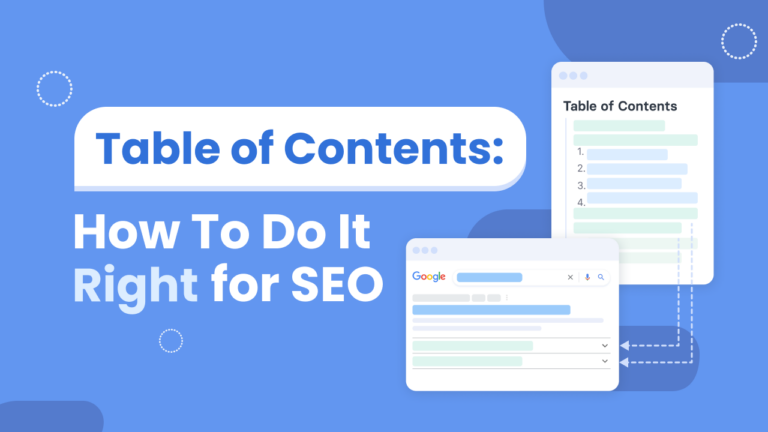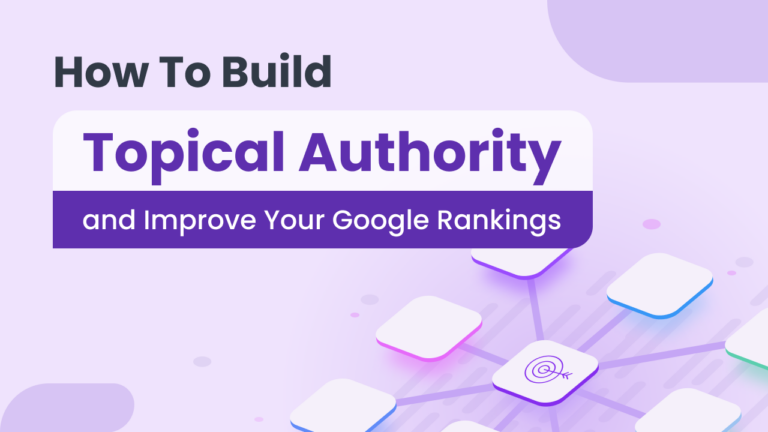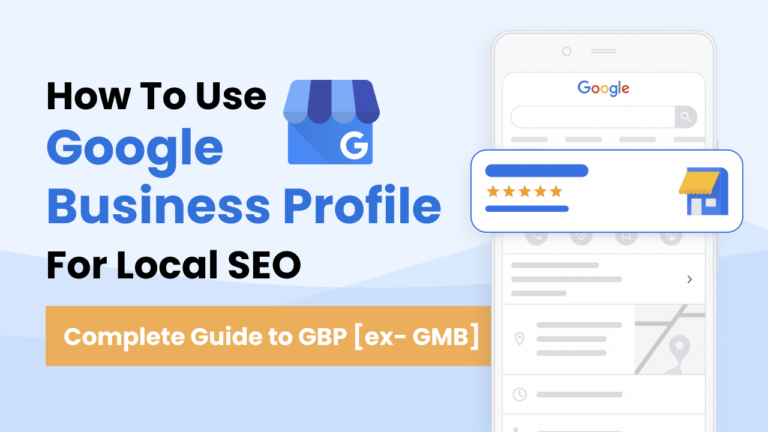Content is at the heart of every digital marketing strategy. One of the simplest ways to enhance a blog post’s performance is to optimize its page length. Although the word count doesn’t directly affect the search engine results, creating long-form content gives you a lot of opportunities to provide value to readers by covering a topic in depth and, by extension, improve the page’s search engine ranking. The word count is an important part of the content brief, and indirectly influences your content outline.
In this guide, you’ll find out the ideal length of a blog post. You’ll also learn why word count matters and how you can determine the ideal content length.
How Important Is the Word Count for SEO?
Having a higher word count enables search engines such as Google to understand your content better. Search engines use content to determine the authority, relevance, and trustworthiness of websites.
The longer the text, the more opportunity you have to provide high-quality content. A text that is too short is unlikely to achieve content depth, and may therefore perform poorly in the search engine page results.
For instance, you can delve into topics and provide value to your readers. Since long-form content is more comprehensive, it can grab your reader’s attention for a longer time, which might help boost your ranking.
Google hasn’t confirmed that dwell time, which refers to the amount of time a reader spends on a web page before returning to the search engine, is a ranking factor. However, Nick Frost, head of Google Brain, might have hinted that it is, in a conference in 2017.
In a lengthy blog post, you have the opportunity to cover your main topic in depth, answer any question your readers may have, and allude to related subtopics. To avoid repetitions, you will naturally have to use semantically related keywords, which will provide more contextual background and help Google better understand your content. Moreover, longer posts tends to get more backlinks than shorter ones.
The Recommended Length of a Blog Post
Generally speaking, you should aim for 1,500 to 2,500 words for your long-form content to achieve the content depth that drives organic traffic. While there’s no minimum word count, thin content can hurt your SEO performance and your blog post should have at least 300 words.
Here are factors that can help you determine the ideal length of a blog post:
- Your readers
Always remember that you’re making content for your readers, not for search engines. So if you’re figuring out an ideal content length for your blogs, you should get to know your audience more.
Use analytics to gauge page dwell time and bounce off rates. You can check engagements. You can also just ask your target audience directly.
- Your topics
Another factor to consider when you’re determining the length of your content is the topics that you want to cover. If you’re making educational content, you might want to dedicate more words to the article so that you can explain the topic extensively. However, if you’re writing about news stories and other timely pieces, a short attention-grabbing piece is preferable. You can also learn about how to find great blog ideas in case you don’t have any clue about what to write.
- Your goals
What do you want to achieve with a blog post? Perhaps you want to engage with audiences. Shorter articles are easily digestible on any kind of device. If, say, you want to reach mobile users, you should add short-form content into the mix. Whenever detailed content isn’t needed, a short blog post will do. However, if you want to cover topics in depth, then long-form content is an ideal medium for that.
- Your competitors
Check your competitors on search engine page results to see how extensively the topic you are trying to rank for is. Generally speaking, the more competitive your industry is, the more words it take for your blog posts to land on that coveted first page of SERP. To speed things up, you may also want to use ZenBrief and quickly see the number of words chosen by your competitors to cover a particular topic.
- The platform
Where are you publishing your articles? When you’re writing a blog post, you should also consider optimizing it for the platform where you’re publishing it, whether on a website or a social media platform. If your goal is to post on LinkedIn, for example, posts that contain between 1,900 and 2,000 words perform the best, according to a study performed by Paul Shapiro of Search Wilderness. After analyzing 3,000 LinkedIn post, Shapiro found that those posts that contain around 2,000 words are the ones that get the most likes, comments and social shares on LinkedIn.
Should Every Blog Post Have the Same Content Length?
Studies show that long-form content tends to perform better than short-form content. However, that doesn’t mean that every single blog post should have thousands of words. In fact, if you feel like you’ve adequately covered your topic in 300, 500, or 800 words, then that should be enough.
Here are varying lengths of blog posts and how you can use them:
- 300 to 500 words
Your shortest blog posts should have a minimum of 300 words. With short posts, your advantages are speed and brevity. You can publish business and industry news articles as soon as you get the latest scoop. At the same time, its brevity helps you serve mobile audiences better.
- 750+ words
A 750-word blog is short enough for people who are looking for a quick read, but it should give you enough opportunity to cover all the basics of a specific topic. These short and concise blogs can rank well on search engines, especially when they are news pieces or niche content with little competition.
- 1,000 to 1,500 words
Although there are no explicit guidelines for how long a cluster content piece should be, a 1,000 to 1,500-word blog post should give you enough opportunity to sprinkle more semantically related keywords into your article, as well as internal links to and from your pillar pages. You can provide more value to your readers as you can expound on certain topics more. Studies show that blogs with 1,000 to 1,500 words are also likely to receive a lot of shares on social media according to a study. Moreover, writing these cluster content pages can help you drive more traffic to other blog posts.
- 2,500+ words
If you’re aiming to improve your search engine rankings, writing substantial long-form content is the way to do it.
Pillar pages cover topics more extensively than your average blog post. They provide a substantial amount of information, some of which link to and from your cluster content. Longer posts might be more challenging to write, but they drive a lot of traffic to your pillar posts, as well as your cluster content.
The length of your blog posts depends on the topic you want to talk about, your objectives, and your competition for the same topics. If your goal is to drive organic traffic for a particular topic, you should check your competition on Google for that topic. How many words do well-ranked articles contain? How extensively do they cover each sub-topic? You could also save time and use ZenBrief to do this automatically for you.
How to Write High-Quality Long-Form Content that Grabs People’s Attention
Writing long-form content comes with significant challenges, one of which is engagement. Not all lengthy blog posts can grab and keep readers’ attention.
Here are a few ways you can do to keep your long-form content engaging:
- Make the title and the description engaging
It is estimated that there are more than 200 factors that affects your Google results ranking. One of them is the CTR (Click-Through Rate) of your article on search engine pages results (SERPs). The title of your page and the description beneath it are generally the first two things people see on search engines. There are many proven ways to make them more appealing to your target audience, such as using emotional words or adding numbers. Whatever you do, avoid over-promising and making your title a clickbait which would lead to a high bounce rate and ultimately lower your ranking on search engines.
- Break up large blocks of text
Readers might find large blocks of text too tedious to read. If readers see chunks of text, they might leave your web page in search of other blog posts with more digestible content. This will result in a high bounce rate and Google will be unforgiving.
To avoid this, use headings and section subheadings to break content into understandable and readable chunks.
You can also consider adding a Table of contents to improve the navigation experience.
When writing paragraphs after each headline, offer full answers in the first 4 to 5 sentences. It may give your content a better chance of being picked up by Google for the featured snippets.
- Write engaging text
Keep the language simple and the sentences succinct. You don’t want to confuse readers or make them zone out. Use ZenBrief’s readability score to monitor this. If you want your readers to read an entire blog post, especially your long-form content, then it needs to be engaging.
Be conversational. Try to write as if you were talking to a friend. This will make your text more readable and engaging. At the same time, it will help you connect with your reader.
- Add fun visual content
Adding images, graphics, videos and other visual aids can help you break up large chunks of text. It also keeps your readers engaged. In addition, make sure to add alt text to each image for SEO purposes.
- Keep it original
There’s a whole lot of content out there, so writing unique content that no one else has written before might be easier said than done. Mapping out what your competitors are talking about can also be a powerful strategy in discovering what key information they are missing. Is there content up-to-date? What key information are they missing?
How Does the Word Count Affects Engagement?
Does the word count affects user engagement? Yes it does, but in a non-intuitive way. Longer posts tend to be shared more often than shorter posts, however people typically don’t scroll till the end of the page on longer posts. According to a study done by Nielsen, only readers spend 81% of the time on the first 3 screenfuls of content. This apparent contradiction is due to the fact that people do not necessarily fully read the articles they share the most, as shown in a study conducted by Chartbeat.

Updating Outdated Content to Maintain Your Ranking on Google
Updating content periodically should be part of your SEO strategy. It will ensure that the following objectives are fulfilled:
- Your content stays relevant
Let’s say you’ve published a long article about the future of SEO. Then one day Google released a new algorithm that dramatically affects the way websites are being discovered on search engines such as RankBrain back in 2015. You would obviously want to update your content accordingly and let your target audience know what this new algorithm implies for SEO.
- Your keywords and subtopics stay relevant
In 2020, about 15% of search queries on Google were new, meaning that Google had never seen them before. What’s more, the popularity of some keywords may have changed since you last updated your website. While Google has gotten really good at understanding the meaning behind search queries, you should check that your content still covers all the subtopics it should cover. ZenBrief can help you figure that out.
- Your content stays relevant
Let’s say you’ve published a long article about the future of SEO. Then one day Google released a new algorithm that dramatically affects the way websites are being discovered on search engines such as RankBrain back in 2015. You would obviously want to update your content accordingly and let your target audience know what this new algorithm implies for SEO.
- Your keywords and subtopics stay relevant
In 2020, about 15% of search queries on Google were new, meaning that Google had never seen them before. What’s more, the popularity of some keywords may have changed since you last updated your website. While Google has gotten really good at understanding the meaning behind search queries, you should check that your content still covers all the subtopics it should cover. ZenBrief can help you figure that out.
- Your website’s ranking is maintained (or improved)
If your article is about a competitive topic, chances are, its search engine ranking will change as more and more competitors are trying to rank for that same topic. Besides, people are more likely to read about recent content than old content. For example, let’s say you wrote about the most expensive cities in the world, people will be more likely to click on your article and deem is valuable if you published it 3 months ago than if you published it 3 years ago.
Takeaway: Is the Number of Words All That Matters in 2021?
The length of your blog post can help you optimize your content for search engines. However, at the end of the day, quality is king. No matter how long or short an article is, if the content doesn’t provide any value, it won’t rank high on search engines.
While long-form content is ideal for SEO, you don’t need to maintain the same length for every blog post. The topic you’d like to cover, your objectives, and the content created by your competition all factor in the number of words you’ll need to drive organic traffic. Analyzing search engine page results, how well your competition covers a topic, and which questions people are asking, are good starting points., are good starting points.
Using ZenBrief to Figure Out How Many Words to Write
ZenBrief is an advanced content optimization software that provides insightful recommendations on how to optimize your content to achieve a better visibility on search engines.
Depending on the topic you want to cover, ZenBrief will tell you how long your content should be, what subtopics you should cover, which questions you should answer, how extensively you should cover each subtopic, and the semantically-related keywords you should include in your content. This will also help you find out subtopics that have been missed by your competition and which you should cover in order for your page to standout.
Once you have prepared an article, you can submit it to ZenBrief to perform an AI content optimization. ZenBrief will help you conduct a competitive analysis of your content against your competition. It will also tell you which keywords should be included in the title tags and warn you whether you are under-using or over-using particular keywords.





